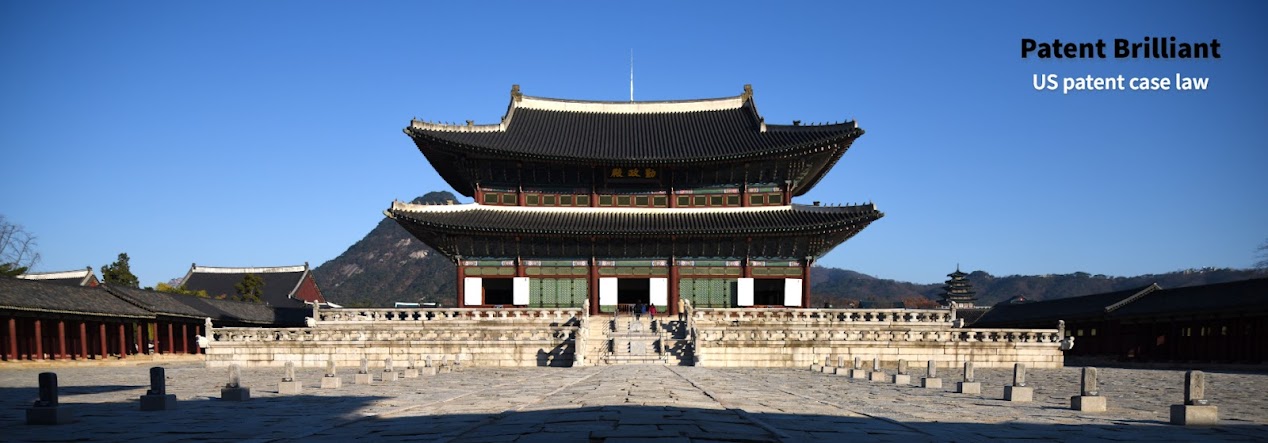- PTO 의 심사 중 즉, BRI 적용에 있어서도 청구항 용어는 명세서 기재사항과 배치되지 않는 이상 plain meaning 으로 해석
- Plain meaning 이란 발명의 완성시점에 있어서, PHOSITA 에게 통상의 의미 (ordinary and customary meaning) 를 의미함
- Ordinary and customary meaning 은 다양한 source - claim itself, specification, drawing, prior art - 에 의하여 증명 (확인) 될 수 있는데, 그 중 최우선의 source 는 specification 임 (즉, claim term 을 해석하는데 있어서, 가장 먼저 명세서 기재사항으로 의미 파악해야 한다는 뜻)
- 청구항 용어가 ordinary and customary meaning 을 갖는다는 전제 (presumption) 는 출원인이 명세서에 해당 용어의 다른 정의를 명확하게 기재함으로써 극복됨
The presumption that a term is given its ordinary and customary meaning may be rebutted by the applicant by clearly setting forth a different definition of the term in the specification. In re Morris (Fed. Cir. 1997)
- 명세서 기재사항에 의하여 청구항이 해석 (이해) 될 수 있으나, 그러한 기재사항으로 청구항을 한정하여 해석하는 것은 금지됨; 명세서에 기재된 특정 실시예 (embodiment) 를 그 보다 광의의 의미로 해석 가능한 청구항 용어를 제한하는 것으로 사용하면 안됨
Though understanding the claim language may be aided by explanations contained in the written description, it is important not to import into a claim limitations that are not part of the claim. For example, a particular embodiment appearing in the written description may not be read into a claim when the claim language is broader than the embodiment. Superguide Corp. v. DirecTV Enterprises, Inc. (Fed. Cir. 2004)
- 명세서 기재사항이 청구항 용어의 범위와 내용을 명확하게 할 때는 해당 청구항 해석을 위하여 extrinsic evidence 를 참고하면 안됨
- 청구항 용어를 ordinary and customary meaning 으로 해석하지 않는 (오직) 2가지 경우는 (1) 출원인이 lexicographer 로 행위한 경우, (2) 명세서에서 청구항 용어의 온전한 범위 (의 일부) 를 포기한 경우 (e.g., prosecution history 상에서, 해당 용어에 대한 범위를 한정해석 함으로써, 심사관의 거절이유를 극복한 경우)
- 출원인이 lexicographer 로 행위하기 위해서는 청구항 용어의 특별한 정의 - plain and ordinary meaning 과 구별되는 - 를 명세서에 명확하게 제시하여야 함
- 출원인이 명세서 상에 어느 청구항 용어에 대한 명백한 정의를 내렸다면, 그 의미가 해석 시 우선함
Where an explicit definition is provided by the applicant for a term, that definition will control interpretation of the term as it is used in the claim. Toro Co. v. White Consolidated Industries Inc. (Fed. Cir. 1999)
- 특정 의미를 부여할 때는 명세서 기재사항이 충분히 명확하여, PHOSITA 기준에서 통상의 의미와는 구분되는 의미로 이해될 수 있는 정도에 이르러야 함
[I]t is important to note that any special meaning assigned to a term "must be sufficiently clear in the specification that any departure from common usage would be so understood by a person of experience in the field of the invention." Multiform Desiccants Inc. v. Medzam Ltd. (Fed. Cir. 1998)
- 경우에 따라서는, 특정 의미는 명세서 전반에 걸쳐 문맥상 (contextual) 의 사용에 의하여 암시될 수 있음; 그러나, 애매 모호한 경우에는 ordinary and customary meaning 이 우선. 즉, special meaning 을 정의하는 방법이 명세서에서 "명시적으로 기재" 하는 것 만은 아니고, 암시적일 수도 있다는 의미
- 출원인은 청구항 용어의 온전한 범위 중 일부에 대하여 포기함으로써, 해당 용어의 plaim meaning 으로의 해석의 추정 (presumption) 을 부정할 수 있는데, disavowal, disclaimer 는 명확하고 오류가 없는 경우에만 포기한 대로 해석함
Applicant may also rebut the presumption of plain meaning by clearly disavowing the full scope of the claim term in the specification. Disavowal, or disclaimer of claim scope, is only considered when it is clear and unmistakable. SciMed Life Sys., Inc. v. Advanced Cardiovascular Sys., Inc. (Fed.Cir.2001)
- 심사관이 어느 청구항 용어에 대하여 BRI 해석을 했는데, 해당 용어에 대하여 명세서 상의 묵시적 포기 (implicit disavowal) 가 있는 것 보다 더 좁게 해석되었다면, 심사관은 그러한 해석을 prosecution history 에 명확하게 기록해서 남겨야 함
